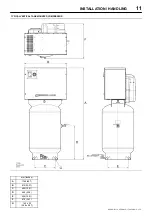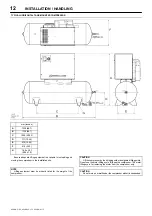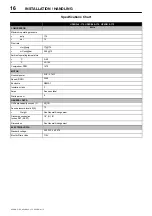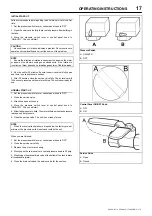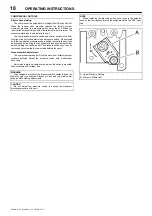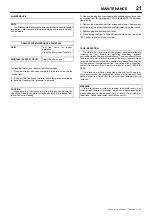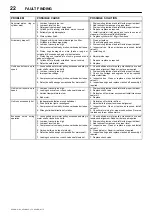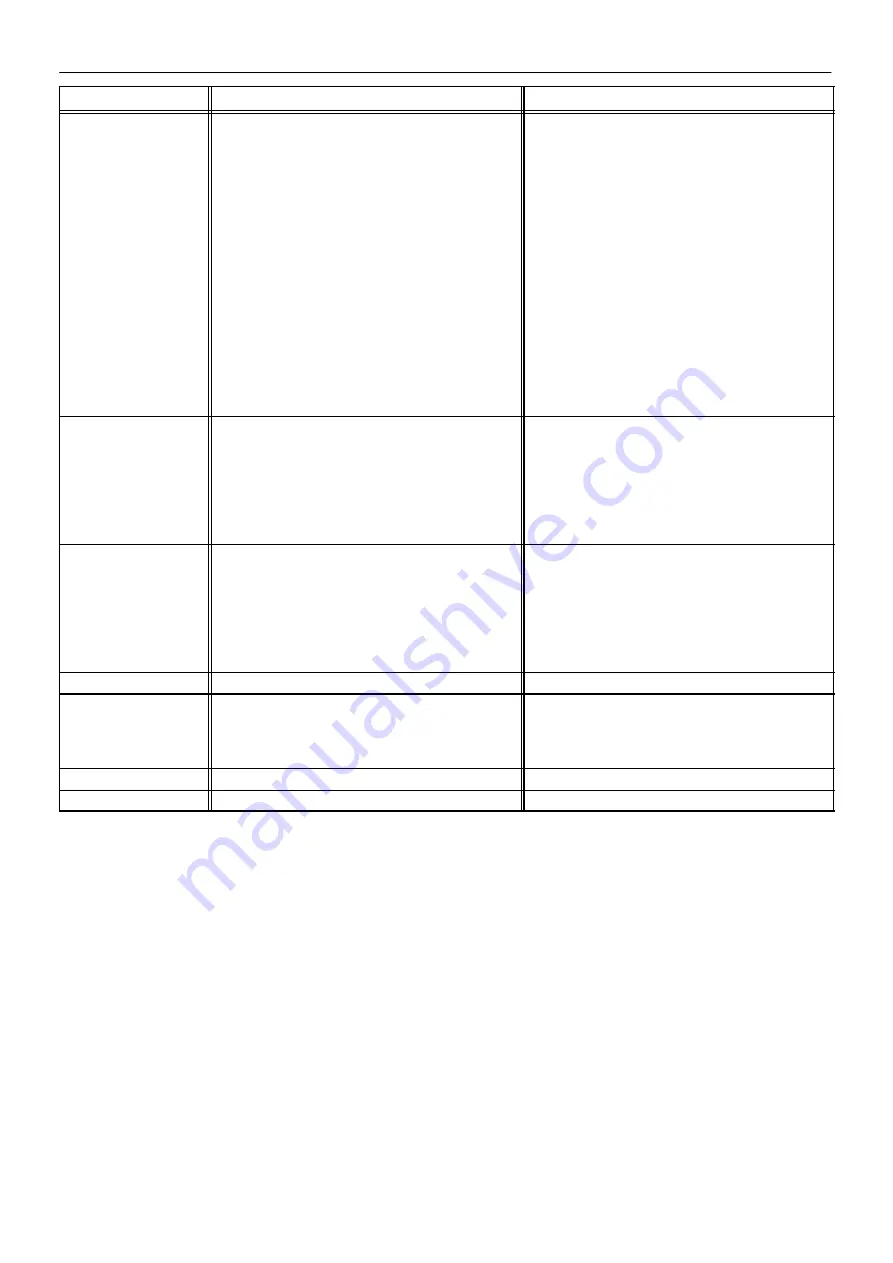
FAULT FINDING
24
UP6RD–5–175, UP6RM–5–175, UP6RD–5–175
PROBLEM
POSSIBLE CAUSE
POSSIBLE SOLUTION
Motor overload trips or
draws excessive current
1. Lubricant viscosity too high.
2. Improper line voltage.
3. Wiring or electric service panel too small.
4. Poor contact on motor terminals or starter connections.
5. Improper starter overload heaters.
6. Poor power regulation (unbalanced line).
7. Drive belts too tight or misaligned.
8. Compressor valves leaky, broken, carbonized or loose.
9. Cylinder(s) or piston(s) scratched, worn or scored.
10.Connecting rod, piston pin or crankpin bearings worn or
scored.
11. Defective ball bearings on crankshaft or motor shaft.
12.Leaking check valve or check valve seat blown out.
13.Ambient temperature too low.
14.Bad motor.
1. Drain existing lubricant and refill with proper lubricant.
2. Check line voltage and upgrade lines as required.
Contact electrician.
3. Install properly sized wire or service box. Contact
electrician.
4. Ensure good contact on motor terminals or starter
connections.
5. Install proper starter overload heaters. Contact
electrician.
6. Contact power company.
7. Adjust belts to proper tension and alignment.
8. Inspect valves. Clean or replace as required.Install
valve kit.
9. Repair or replace as required.
10.Inspect all. Repair or replace as required.
11. Inspect bearings and replace crankshaft assembly if
required.
12.Replace check valve.
13.Relocate unit to warmer environment.Install crankcase
heater kit. Convert to synthetic lubricant.
14.Replace
Motor will not start
1. Improper line voltage.
2. Wiring or electric service panel too small.
3. Poor contact on motor terminals or starter connections.
4. Improper starter overload heaters.
5. Bad motor.
1. Check line voltage and upgrade lines as required.
Contact electrician.
2. Install properly sized wire or service box. Contact
electrician.
3. Ensure good contact on motor terminals or starter
connections.
4. Install proper starter overload heaters. Contact
electrician.
5. Replace
Oil in discharge air (oil
pumping)
1. Lubricant viscosity too low.
2. Detergent type lubricant being used.
3. Piston rings damaged or worn (broken, rough or
scratched). Excessive end gap or side clearance.
4. Piston rings not seated, are stuck in grooves or end
gaps not staggered.
5. Cylinder(s) or piston(s) scratched, worn or scored.
6. Worn cylinder finish.
7. Excessive condensate in receiver tank.
1. Drain existing lubricant and refill with proper lubricant.
2. Drain existing lubricant and refill with proper lubricant.
3. Install ring kit.
4. Adjust piston rings.
5. Repair or replace as required.
6. Deglaze cylinder with 180 grit flex–hone.
7. Drain receiver tank with manual drain valve.
Oil leaking from shaft seal
1. Crankshaft seal worn or crankshaft scored.
1. Replace seal or crankshaft assembly.
Safety/relief valve ”pops”
1. Clogged or dirty inlet and/or discharge line filter.
2. Compressor valves leaky, broken, carbonized or loose.
3. Defective safety/relief valve.
4. High pressure inlet valve leaking.
1. Clean or replace.
2. Inspect valves. Clean or replace as required. Install
valve kit.
3. Replace
4. Inspect, clean or repair as required.
High interstage pressure
1. High pressure inlet valve leaking.
1. Inspect, clean or repair as required.
Low interstage pressure
1. Low pressure discharge valve leaking.
1. Inspect, clean or repair as required.
Summary of Contents for UP6RD-5-175
Page 2: ......


